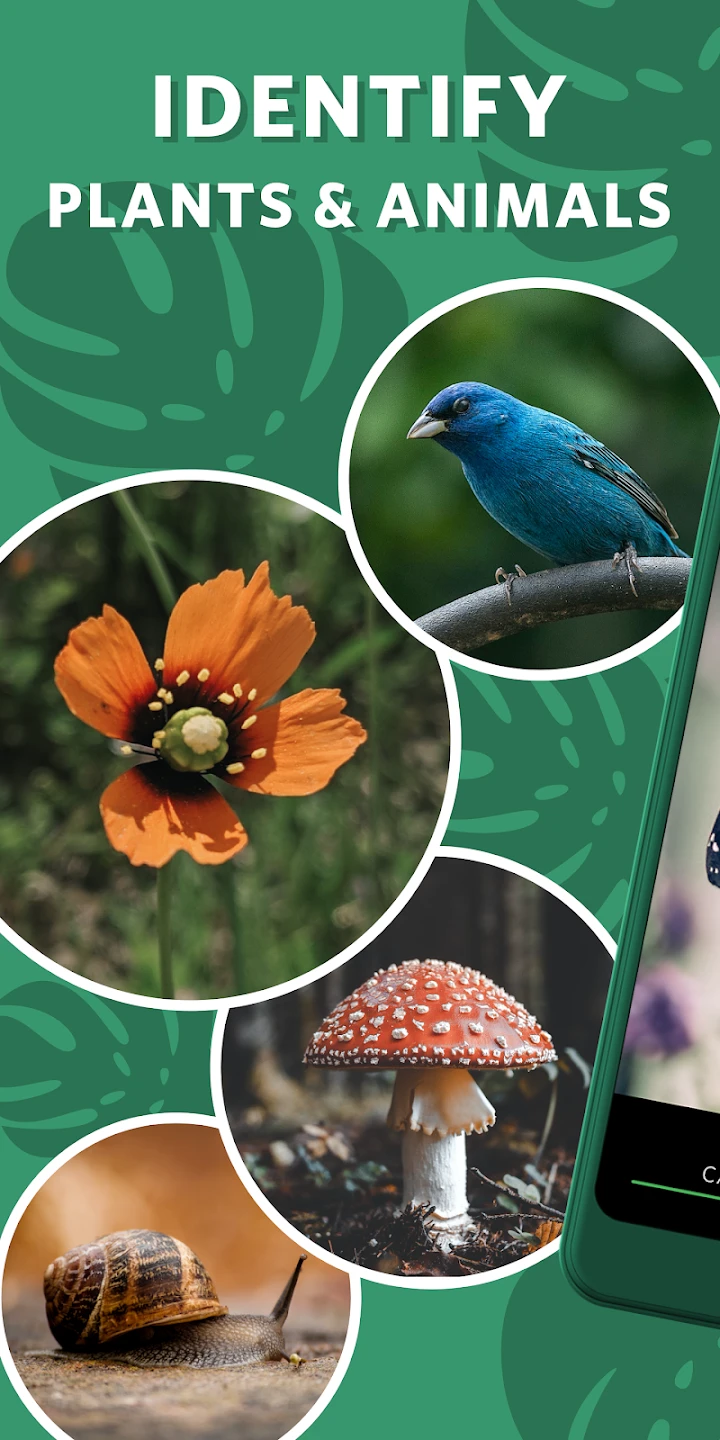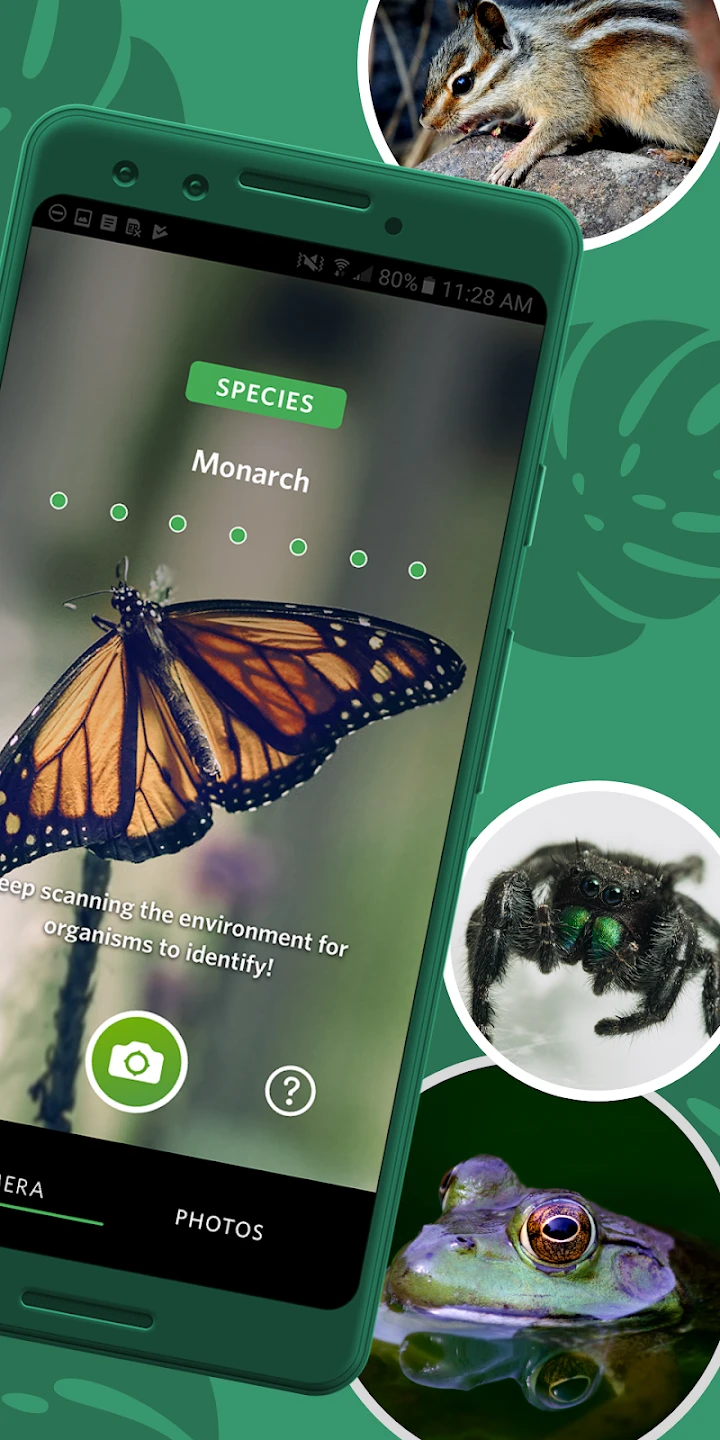 |
|
| Rating: 3.3 | Downloads: 1,000,000+ |
| Category: Education | Offer by: iNaturalist |
Seek by iNaturalist is a free mobile application that transforms smartphone photography into an educational tool for identifying plant and animal species. By simply taking a picture, users receive suggestions based on machine learning algorithms and community knowledge. This intuitive platform is designed for nature enthusiasts, citizen scientists, educators, and curious individuals who want to explore biodiversity while contributing to real-world scientific research.
This app offers tremendous value by combining cutting-edge technology with community collaboration. Users instantly learn about their discoveries while potentially contributing hundreds of new species records to scientists worldwide. The practical applications span environmental education, citizen science participation, species tracking, and fostering a deeper connection to the natural world around us.
App Features
- Smart Identification Engine: This innovative feature uses machine learning algorithms to suggest potential species matches based solely on your photos. For instance, when exploring a nature reserve, it instantly identifies a rare wildflower you’ve never seen before, providing scientific names, common names, and detailed characteristics. This saves hours of manual searching and transforms casual observations into valuable data contributions.
- Species Encyclopedia: Access a comprehensive database that includes detailed information for thousands of documented species. The interface features beautiful high-quality images, distribution maps, habitat details, and verified information contributed by the global community. This is particularly useful when planning nature walks or verifying field guides during outdoor excursions.
- Community Verification System: Your observations can be reviewed and confirmed by experts or experienced naturalists. Imagine finding a butterfly you can’t identify; the community will provide confirmation within hours, along with identification resources. This collaborative element adds scientific rigor while creating a supportive network of nature enthusiasts.
- Journal & Tracking Tools: Maintain a personal record of all your observations, complete with date, location, and species identification. This feature helps users track seasonal changes, monitor personal progress, and build comprehensive nature notebooks without needing external tools. Perfect for educators creating citizen science projects or amateur naturalists documenting local biodiversity.
- Advanced Search & Filtering: Navigate complex biological databases using powerful search tools. Filter results by region, habitat type, taxonomic group, or even specific characteristics visible in your photos. This makes identifying challenging organisms like insects or cryptic plants dramatically easier, supporting both casual exploration and scientific documentation.
- Offline Mode Support: For fieldwork in areas with limited connectivity, save photos locally and sync data once reconnected. This is invaluable for researchers working in remote areas or during field surveys where cellular service is unreliable.
Pros & Cons
Pros:
- Community-powered identification
- Scientific research contribution potential
- Educational value for all ages
- Beautiful interface that works well outdoors
Cons:
- Occasional inaccurate suggestions
- Requires internet for full functionality
- Some species may not be in the database
- Interface may be overwhelming for beginners
Similar Apps
| App Name | Highlights |
|---|---|
| iNaturalist Web Platform |
The web counterpart offering the complete database and research features. Known for its robust scientific documentation and global community involvement. |
| PictureThis |
A plant-focused identification app with beautiful UI and extensive plant knowledge. Ideal for gardening enthusiasts seeking detailed plant care information. |
| Merlin Bird ID |
Specialized bird identification app with excellent audio recognition. Perfect companion for ornithologists and birdwatchers in the field. |
Frequently Asked Questions
Q: How accurate is the automatic identification feature?
A: Our AI engine uses machine learning trained on millions of verified observations. While generally very accurate, it can sometimes misidentify similar-looking species. Always double-check with experts or consult community suggestions for confirmation.
Q: Can I contribute to scientific research with my observations?
A: Absolutely! Every documented observation contributes to citizen science projects. We’ve helped identify thousands of new species records and distribution data points, directly supporting real biological research initiatives worldwide.
Q: What happens to my photos after I submit them?
A: Your photos remain private by default unless you choose to share them. All data follows strict privacy protocols, and only verified information is made public to support scientific documentation and community knowledge sharing.
Q: Is there an option to identify fungi or mushrooms specifically?
A: Yes! Our community has extensive expertise in mycology. You can upload mushroom photos and receive identifications from specialized users. The platform’s database continues to grow, with dedicated sections for various organism groups.
Q: Does the app work offline in remote areas?
A: You can still use the core features to take photos and record observations offline. Once you reconnect, all data automatically syncs. For areas with complete cellular coverage loss, you may need to manually upload saved observations.
Screenshots
 |
 |
 |
 |






